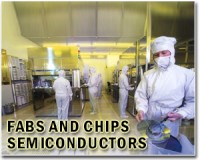 |
Champaign, IL (SPX) Feb 21, 2011 Illinois researchers have documented the first observations of some unusual physics when two prominent electric materials are connected: superconductors and graphene. Led by University of Illinois physics professor Nadya Mason, the group published its findings in the journal Nature Physics. When a current is applied to a normal conductor, such as metal or graphene, it flows through the material as a stream of single electrons. By contrast, electrons travel in pairs in superconductors. Yet when a normal material is sandwiched between superconductors, the normal metal can carry the supercurrent. Normal metals can adopt superconducting capacity because the paired electrons from the superconductor are translated to special electron-hole pairs in the normal metal, called Andreev bound states (ABS). "If you have two superconductors with a normal metal between, you can actually transport the superconductivity across the normal material via these bound states, even though the normal material doesn't have the electron pairing that the superconductors do," Mason said. ABS are extremely difficult to measure or to observe directly. Researchers can measure conduction and overall magnitude of a current, but have not been able to study individual ABS to understand the fundamental physics contributing to these unique states. Mason's group developed a method of isolating individual ABS by connecting superconducting probes to tiny, nanoscale flakes of graphene called quantum dots. This confined the ABS to discrete energy levels within the quantum dot, allowing the researchers to measure the superconducting ABS individually and even to manipulate them. "Before this, it wasn't really possible to understand the fundamentals of what is transporting the current," Mason said. "Watching an individual bound state allows you to change one parameter and see how one mode changes. You can really get at a systematic understanding. It also allows you to manipulate ABS to use them for different things that just couldn't be done before." Superconductor junctions have been proposed for use as superconducting transistors or bits for quantum computers, called qubits. Greater understanding of ABS may enable other applications as well. In addition, it may be possible to use the superconducting graphene quantum dots themselves as solid-state qubits. "This is a unique case where we found something that we couldn't have discovered without using all of these different elements - without the graphene, or the superconductor, or the quantum dot, it wouldn't have worked. All of these are really necessary to see this unusual state," Mason said. The U.S. Department of Energy supported this work, conducted at the Frederick Seitz Materials Research Laboratory at Illinois.
Share This Article With Planet Earth
Related Links - Computer Chip Architecture, Technology and Manufacture Nano Technology News From SpaceMart.com
 Intel to invest $5 billion in new Arizona plant
Intel to invest $5 billion in new Arizona plantHillsboro, Oregon (AFP) Feb 18, 2011 US computer chip giant Intel announced plans on Friday to invest more than $5 billion to build a new state-of-the-art chip manufacturing facility in Arizona. The announcement was made by Intel president and chief executive Paul Otellini during a visit by President Barack Obama to an Intel facility in Hillsboro, Oregon. Intel, the world's largest computer chip maker, said construction of ... read more |
|
| The content herein, unless otherwise known to be public domain, are Copyright 1995-2010 - SpaceDaily. AFP and UPI Wire Stories are copyright Agence France-Presse and United Press International. ESA Portal Reports are copyright European Space Agency. All NASA sourced material is public domain. Additional copyrights may apply in whole or part to other bona fide parties. Advertising does not imply endorsement,agreement or approval of any opinions, statements or information provided by SpaceDaily on any Web page published or hosted by SpaceDaily. Privacy Statement |